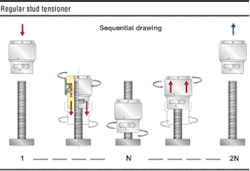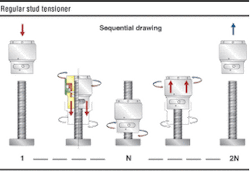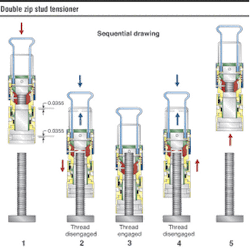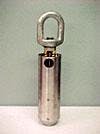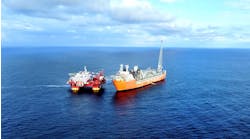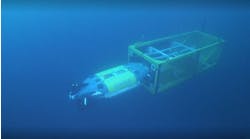Judy Maksoud
International Editor
As exploration and production move into deeper water, subsea equipment be-comes increasingly more difficult to retrieve and reposition. This difficulty is addressed by the Zip-Lift load conn-ector, which provides a way to robotically connect and disconnect heavy loads to lifting devices, allowing placement or retrieval from the sea floor.
"All good product development is user-driven," explained George Sturdevant, president of Fastorq Bolting Systems, which designed and manufactures the Zip-Lift connector. Operators need to be able to efficiently maneuver and recover valuable components such as subsea trees, valves, and flanges. The Zip-Lift makes these operations safe and simple because it can be remotely operated and is not depth limited, Sturdevant says.
Innovative design
Zip-Lift uses a patented double-zip-nut technology to robotically connect and disconnect heavy loads to lifting devices. The push on/pull off stud tensioner is the key to the newly designed tool. Normally, to secure a bolt, a nut has to be rotated around it. The thread segments within the zip nut open, slip over the bolt, and when released mate the nut and the bolt without rotation. Because the zip nut does not rotate around the bolt, mating it to a bolt requires considerably less space than a traditional nut and bolt assembly in which the nut has to be turned to be secured.
Incorporating versatility
Fastorq engineers saw the potential for the zip nut if it were coupled with a device for lifting. Combining these capabilities resulted in a tool that can perform a broad spectrum of lifting activities. The device can be designed to manage varying weights. The size of the handle and the material and diameter of the threaded rod determine the weight capacity of the entire mechanism. The Zip-Lift can be designed to lift up to 40 tons.
The device that engages the nut can be operated hydraulically, pneumatically, or manually, which includes operating the mechanism with a manipulator, such as those affixed to an ROV or manned submarine.
Other products on the market can perform some of the same tasks as the Zip-Lift, but they have limitations that the Zip-Lift design overcomes Sturdevant says. For example, a ball-and-socket tool is available to accomplish a similar task. But according to Richard Potter, manager of product development for subsea tooling at Fastorq, "The Zip-Lift mechanism is easier to engage and disengage than the ball-and-socket device."
The other major difference between the two tools is that for the ball-and-socket tool to function, one of the two mating pieces must be mounted before the subsea equipment is installed. If the tool is not attached before the equipment is placed subsea, there is no way to use the ball-and-socket option. Because the Zip-Lift can pick up anything to which a bolt has been affixed, it is more versatile than other tools intended for comparable operations, the company says.
Fastprq's Zip-Lift tool uses a patented zip nut technology.
"The Zip-Lift can go right over damaged threads and is functional even in areas where there is corrosion and marine growth," Potter said.
Safety advantages
The zip nut contains three thread segments that spread apart to slip over a threaded rod, and lock together to engage. The locking mechanism operates under tension. The weight of the load secures the lock, which will not release until the weight is no longer suspended from the device.
"Because of the way the Zip-Lift operates, there is no chance that the load can slip or be dropped from the device," Engineering Manager Afif Joubran, explained, "because the load itself engages the locking mechanism. It is physically impossible to release the Zip-Lift with a load engaged." This element of the design makes accidental separation impossible and creates a safety advantage over other tools that can accidentally uncouple, dropping a load.
Broader applications
Initially designed for a US Department of Energy research lab for remote handling of nuclear waste, the Zip-Lift can be used in a confined space and can operate without direct human intervention. Now, engineers are seeing more opportunities where the Zip-Lift will be the tool of choice.
The Zip-Lift can place, reposition, and pick up skids subsea. When water is too deep for divers, skid removal can pose a serious problem. In such instances, Zip-Lift is a simple solution. FMC is using this technology as a backup method for removing subsea christmas trees from the wellhead. The primary backup is hydraulic. The secondary backup is the Zip-Lift.
There has also been some interest in affixing the tool to a crane in order to move heavy loads from supply boats onto rigs and on or off slow moving cargo trains.
The Department of Energy Research Lab tested a Zip-Lift designed to accommodate ASTM A193-B7 threaded rods, 11/4-in. 8 UNC threads, and a handle rated at 16,500 lb. The tool ran without failure an endurance test of 700 cycles consisting each of engaging a 11/4-in. threaded rod, picking up a 16,500-lb load, releasing it, and disengaging the rod.
